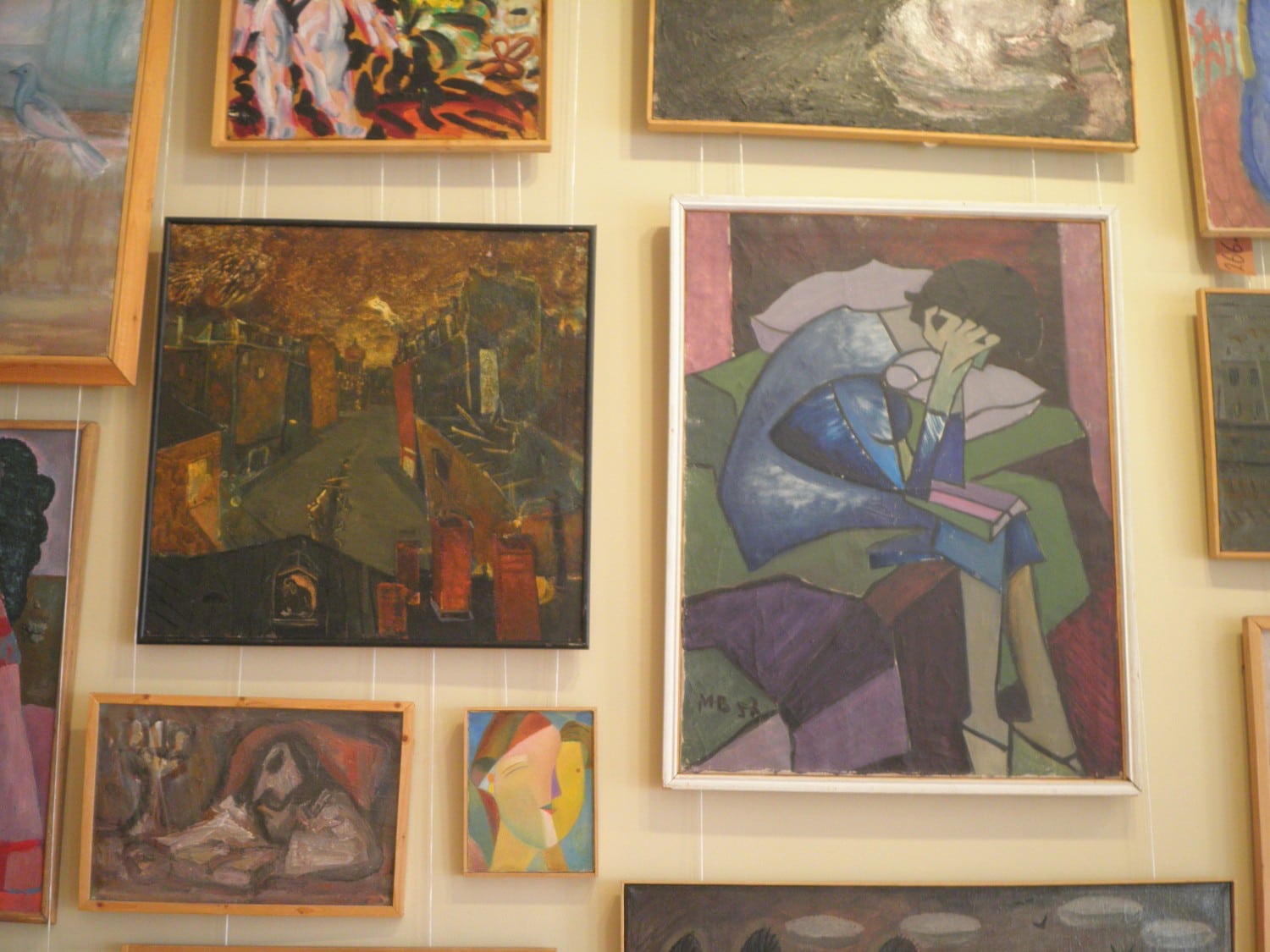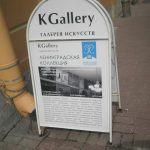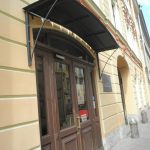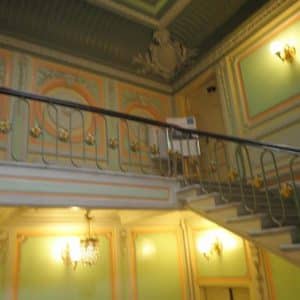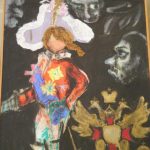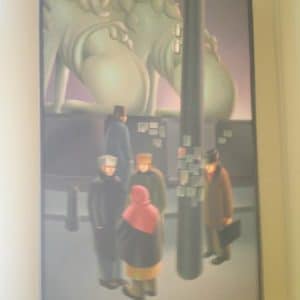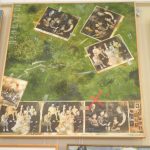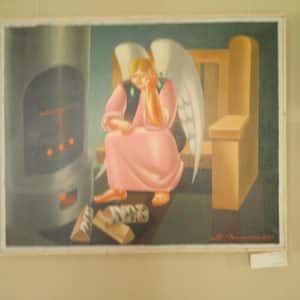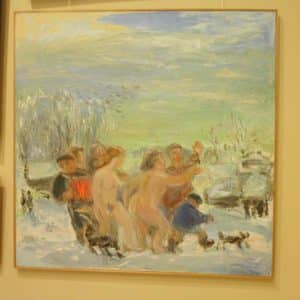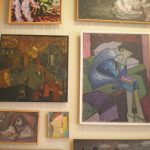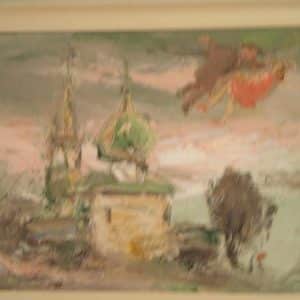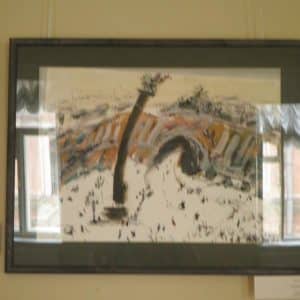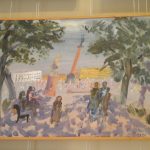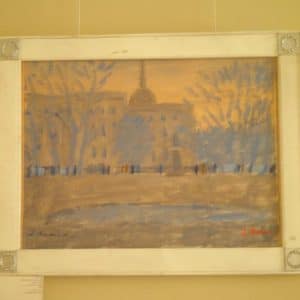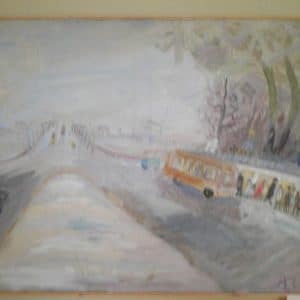“The Leningrad Collection” and
“I Keep This City” in St. Petersburg /
“Ленинград Коллекция” и
“Я этим городом храним” в Санкт-Петербурге
K Gallery
Ул. Галерной, 47
Prices: 100 rubles for students
Coming to and from the dorms everyday, I have passed by advertisements for two art showcases: the “Leningrad Collection” and “ I Keep This City (Я этим городом храним)“ Having caught my intrigue, I decided to check the displays out, and through the lenses of beautiful paintings, I gained deeper insight into fascinating eras of Russian artistic expression.
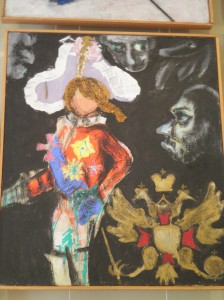
The “Leningrad Collection”, which runs from May 12, 2013 to September 25, 2013, focuses on the Second Avant-Garde, or unofficial art from the 1960s-1980s. The movement originated in the late 1950s-1960s, as the post-Stalinist thaw inspired greater creative experimentation amongst the Russian artistic community. Nonetheless, these artists still faced heavy limitations imposed by the government, and therefore existed “underground,” away from the Union of Artists and the state’ s dictated standard of socialist realism. The movement reached its peak in the mid-1970s to early 1980s, after the first legal exhibitions were displayed at the Gaza House of Culture and Nevsky House of Culture in 1974 and 1975, respectively (which also coined a new nickname for these artists and their works: “Gazanevsky”).
Perestroika and the fall of communism allowed for greater freedoms to be reintroduced in the Russian art scene, which essentially led to the end of this era in the 1990s. This collection displayed an eclectic array of paintings that ranged in style and subject. Some were colorful depictions of Russian traditions and history, others abstract blends of color, etc. The ones that stood out the most, in my opinion, blended traditional symbols with Soviet life. For example, one portrait featured a group of drab citizens crowding behind the Bank Bridge, an iconic landmark of St. Petersburg, while another depicted a soldier standing next to a double-headed eagle. These pictures best capture the context of their era, and also infuse a myriad of historical and cultural elements, which in turn creates an absolutely fascinating works of art.
The additional collection “I Keep This City” runs from May 30, 2013 to October 3, 2013, and depicts Leningrad in the creative works of artists from 1920-1940. Despite the pivotal era featured in the collection, with renaming of the city to Leningrad and subsequent attempts to carve out a new identity, it did not seem as markedly different from contemporary St. Petersburg than I thought it would.
Perhaps that was point, though. The name of the exhibition, “Я этим городом храним” comes from a famous song about St. Petersburg. In the song, Soviet artist Evgenii Krylatov croons his unconditional love for the city and states that he wouldn’t have the city any other way than for what she is. You can listen to the song by clicking the YouTube video to the left. You can also find the lyrics to the song (in Russian) here. I reveled in the cityscapes’ as I recognized familiar landmarks, I felt better connected to the spirit of St. Petersburg.
I feel that both collections did an excellent job of portraying the tumultuous 20th century in Russian art. Not only do I feel more cultured, but I am better aware of how the location, conditions, and zeitgeists of those periods help shape incredible artistic movements in St. Petersburg and Russia as a whole.


